
- Share via
CARMEL-BY-THE-SEA — Good luck finding Bill Woo’s house.
Ask for directions, and he will say: “Brown shingle house with the stop sign and the fire hydrant by the driveway.”
He’s on Junipero Avenue, two or three houses north of an intersection — depending on where you start counting.
Woo expects you to get lost. Like everyone else in Carmel-by-the-Sea, he does not have a home address.
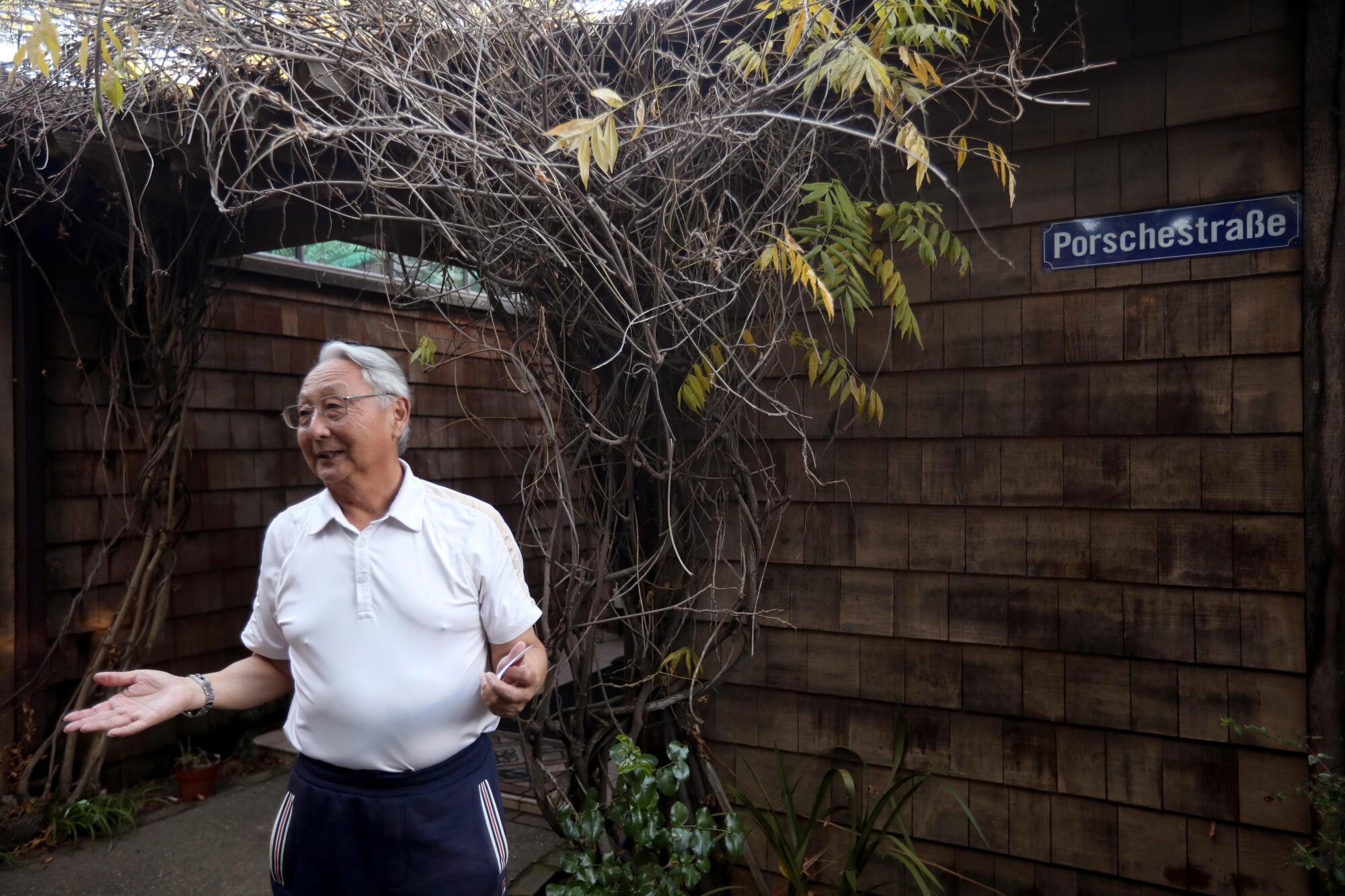
“How do you explain this to someone?” he asked a Times reporter who got lost trying to find his home. “It’s insanity.”
In this wealthy town on the Monterey Peninsula, residents use descriptors like: City Hall is on the east side of Monte Verde Street between Ocean and 7th avenues. And they give their homes eccentric names such as Almost Heaven, Faux Chateau and Go Away.
There is no mail delivery — they have to go to the post office.
For more than 100 years, the townsfolk fought to keep it that way, once threatening to secede from California if it imposed addresses. Serendipitous run-ins with neighbors at the post box, they said, were an essential part of their small-town identity.
But now, tradition is running up against Amazon and Instacart and mail-order medications.
You need a physical address to get a Real ID and to open bank accounts or credit cards. And if you just moved to Carmel-by-the-Sea? Expect to spend hours on the phone, arguing that your house is real when you try to hook up utilities, water and the internet.
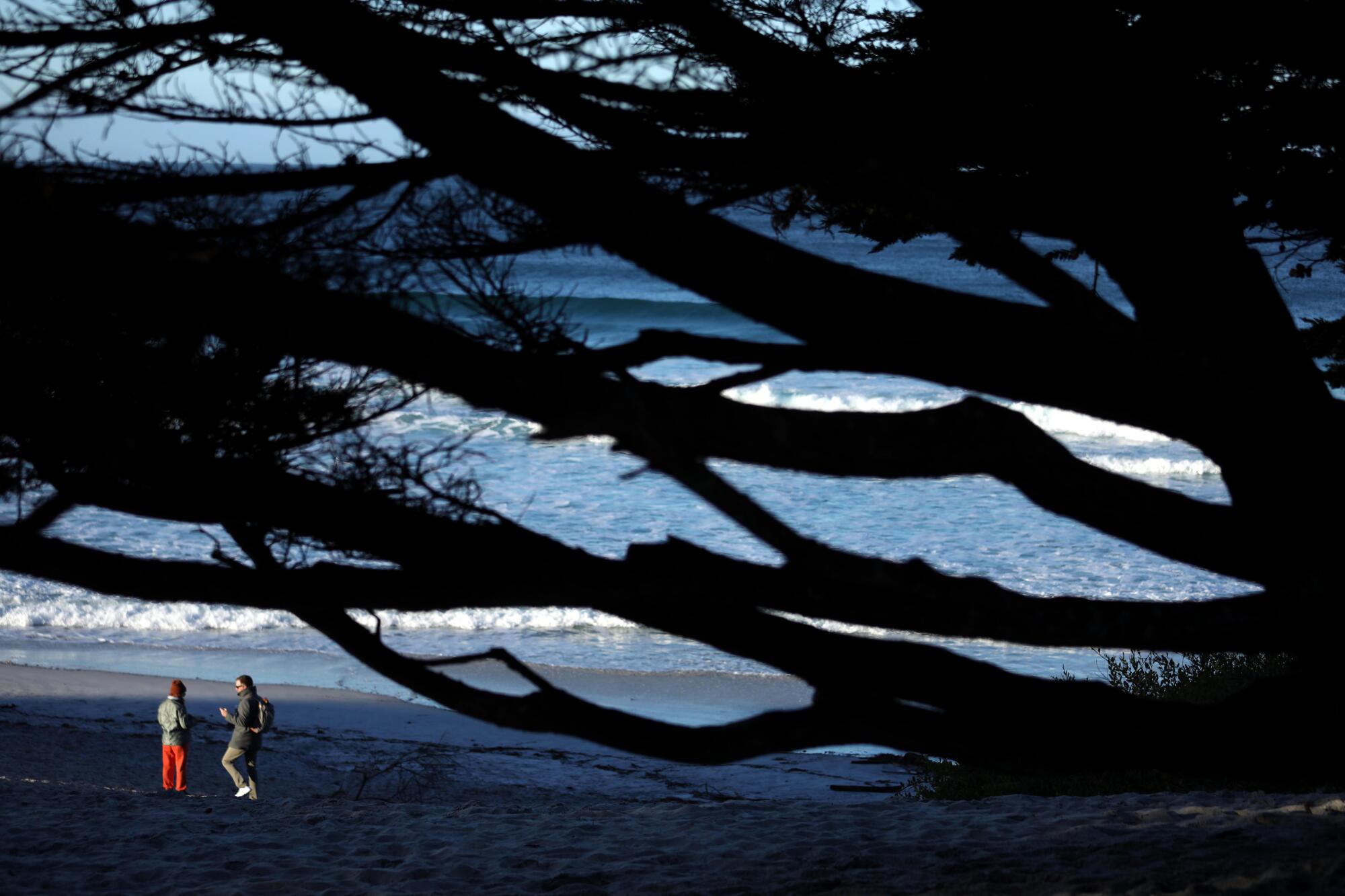
“The argument is, ‘Oh, we want to keep our place quaint. We meet people at the post office.’ ... Explain to me how it’s quaint. It’s B.S.!” said Woo, 76, who has lived here for 33 years.
After decades of resistance, the Carmel-by-the Sea City Council is now considering addressing those problems — pun intended. In the coming weeks, an ad hoc committee is expected to recommend whether to formally number houses and businesses.
“It’s more than just a convenience,” said Councilwoman Karen Ferlito, a member of the ad hoc committee. “The idea that this makes us unique? I don’t think anybody comes to Carmel visiting because we don’t have street addresses. ... Yes, it’s a nice little story. But times have changed since this was a tiny little village with a few artists who met at the post office.”
Plus, she said, the town is not abiding by the state fire code, which requires buildings to be numbered.
But old traditions die hard. In a recent Carmel Residents Assn. survey answered by 132 participants, 59% said they did not want addresses, even if it meant the “occasional inconvenience.”
“Meeting at the post office has been a way for us to hang together ... which is so special in Carmel because we’re small enough we can be a real community,” said Karyl Hall, a septuagenarian who is co-chair of the Carmel Preservation Assn., grew up here and is opposed to addresses.
“We have to say, ‘Yeah, it would be more convenient. But it’s one more way in which we become ordinary.’ ”
The debate over addresses began in earnest during the COVID-19 pandemic, when people began shopping online more frequently, and remote workers moved to town.
But some tourists and residents have long feared that if they have an accident or a medical issue, emergency responders will have trouble finding them, Ferlito said.
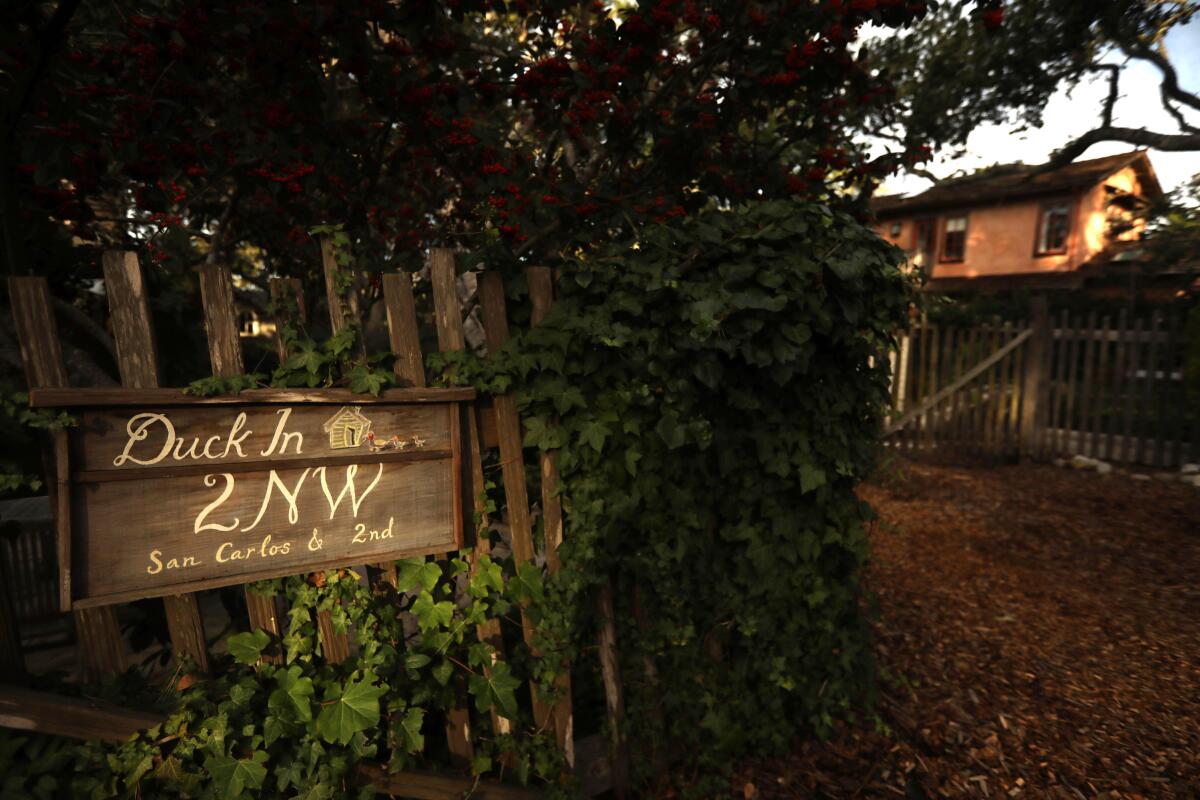
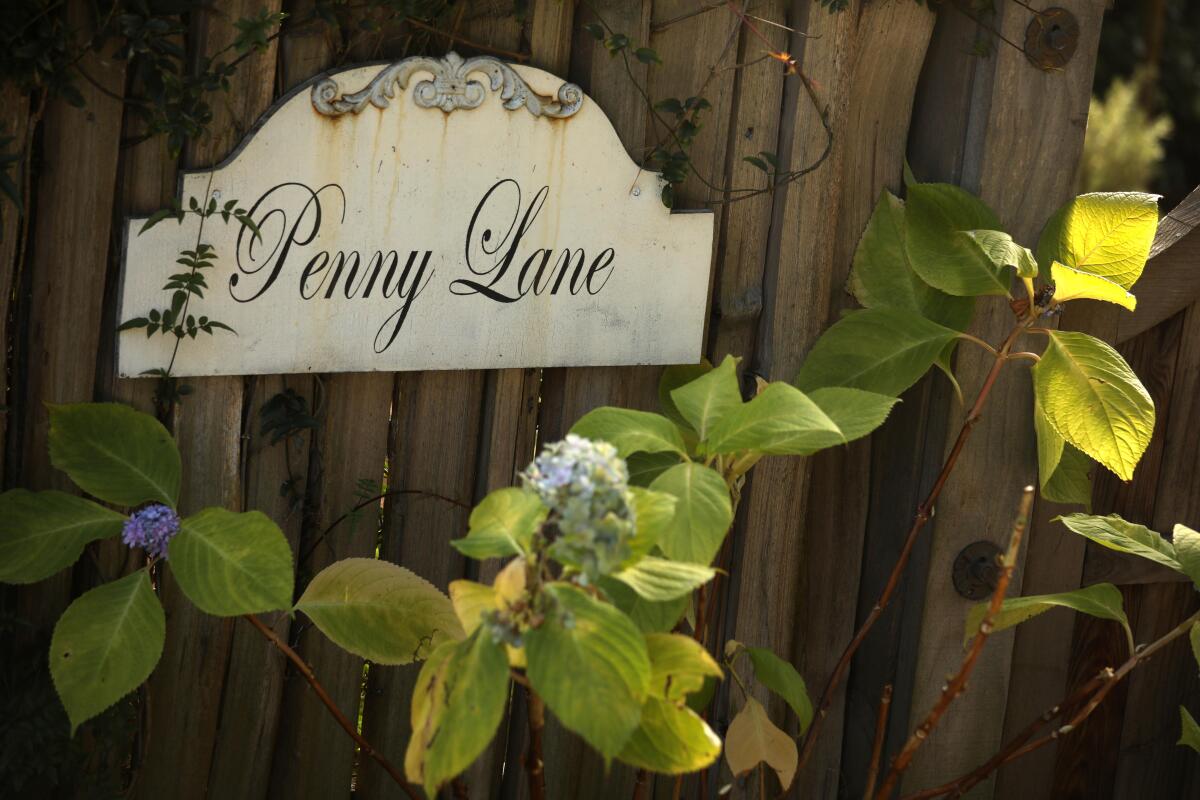
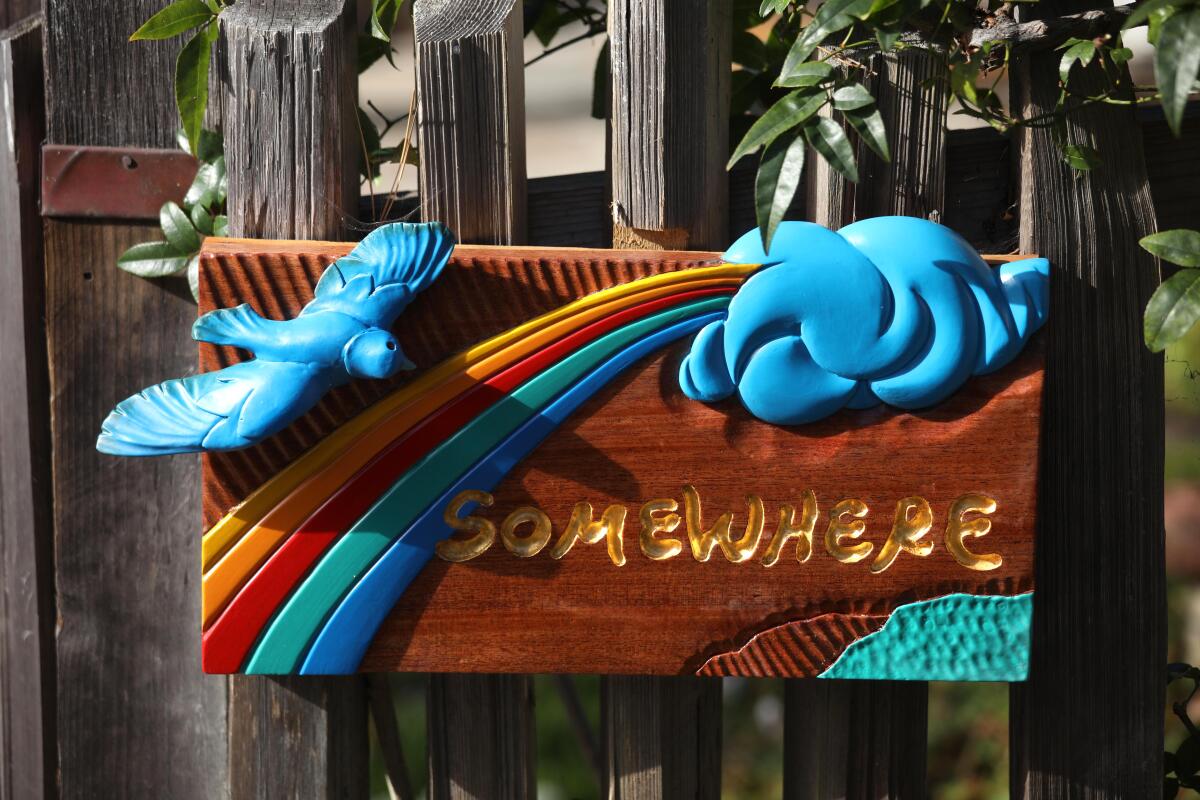
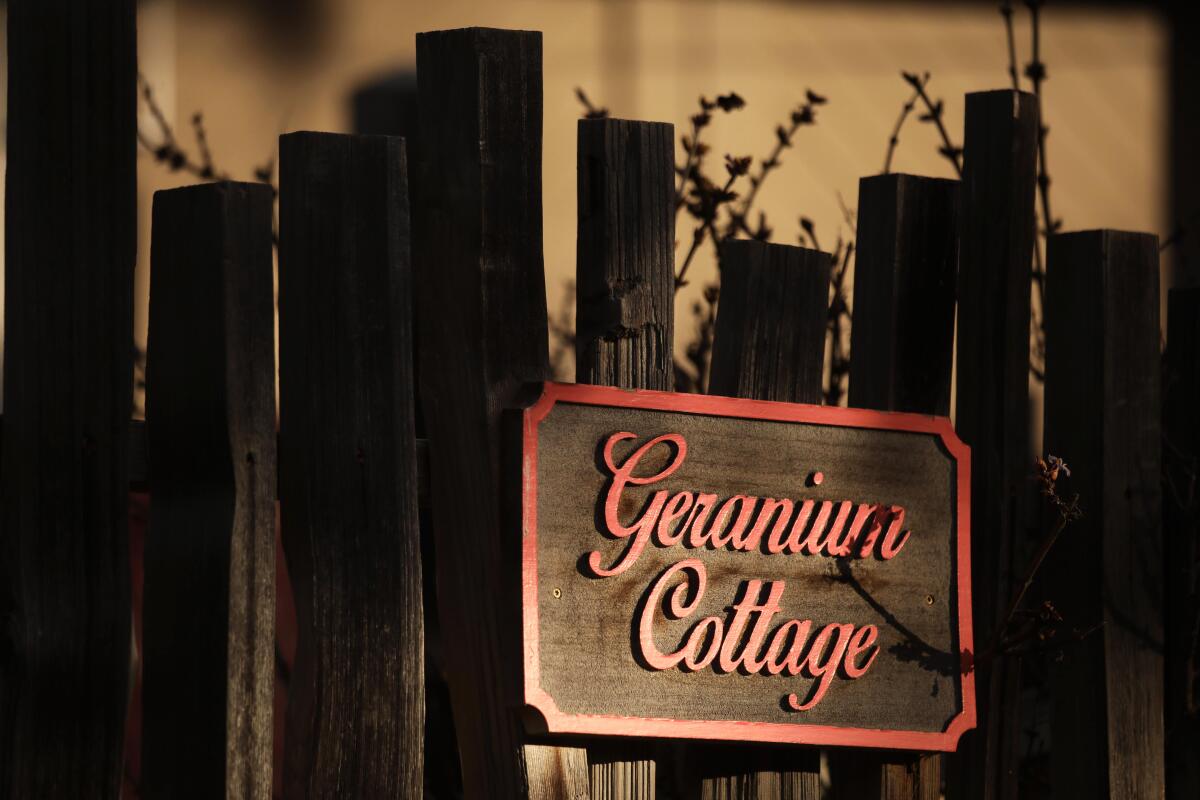
Due to the lack of addresses in Carmel-By-The-Sea residents post creative names to identify their homes in the seaside town.
“We have an aging population here,” she said. “Time, when you have a heart attack or stroke, matters.”
In a letter this month to councilmembers, which Ferlito shared with The Times, one resident said she soon will be having major surgery that limits her mobility. She cannot order meal kits, and getting picked up when she needs a ride is an ordeal.
“More often or not,” the woman wrote, “unless I am out in the middle of the street waving, they cannot find me. ... This is a legal issue and should harm come to one of these citizens due to your neglect, you would/should be liable.”
Woo, a U.S. Army veteran, struggled to get health insurance through the Department of Veterans Affairs a few years back because he could not prove his house was real.
After a clerk tried and failed to find it on Google Maps, she asked: “Are you homeless?”
Woo contacted Google, got his home to show up and eventually received coverage.
It is especially hard to find houses at night. There are no street lights in residential areas — people keep flashlights by their doors — and few sidewalks.
Longtime residents and preservationists say this, too, adds to the uniqueness — and privacy — of Carmel-by-the-Sea, whose founders wanted to keep out the so-called trappings of city life.
“We moved here knowing that it’s got some weirdness,” said Nancy Twomey, a Carmel Residents Assn. board member. “But it’s got culture and charm and traditions that we value.”
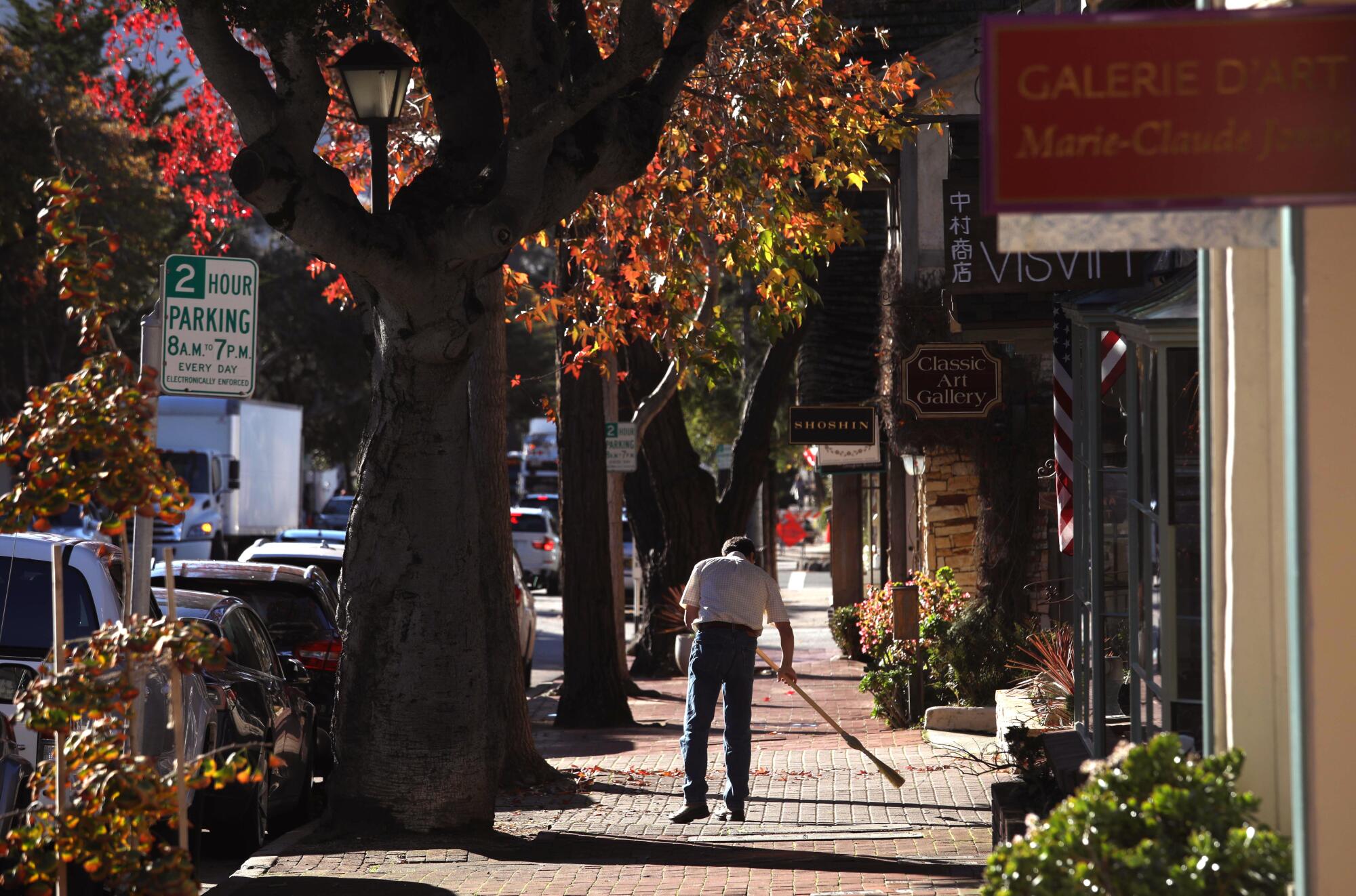

Twomey, retired from a career in high tech marketing, moved from Silicon Valley to Carmel-by-the-Sea, her longtime vacation spot, in 2017.
“It’s weird, and, yes, it’s inconvenient,” she said of the addresses. “But it’s wonderful in its weirdness. It’s like the high heels thing.”
Twomey was referring to an old local law — unenforced but still on the books — that bans heels taller than 2 inches without a permit. It was meant to protect the city from lawsuits if people tripped over pavement warped by tree roots.
Some respondents to the Carmel Residents Assn. survey said they worried that addresses would lead to at-home mail delivery and the closure of their beloved post office.
David Rupert, a spokesman for the U.S. Postal Service, said there are no such plans.
“We’ve been serving the local community since 1889 and we have no intention of changing that,” he said in an email.
Like many residents, Mayor Dave Potter said he believes the push for addresses is coming mostly from newcomers and “the Amazon crowd” — who, he added, should shop locally.
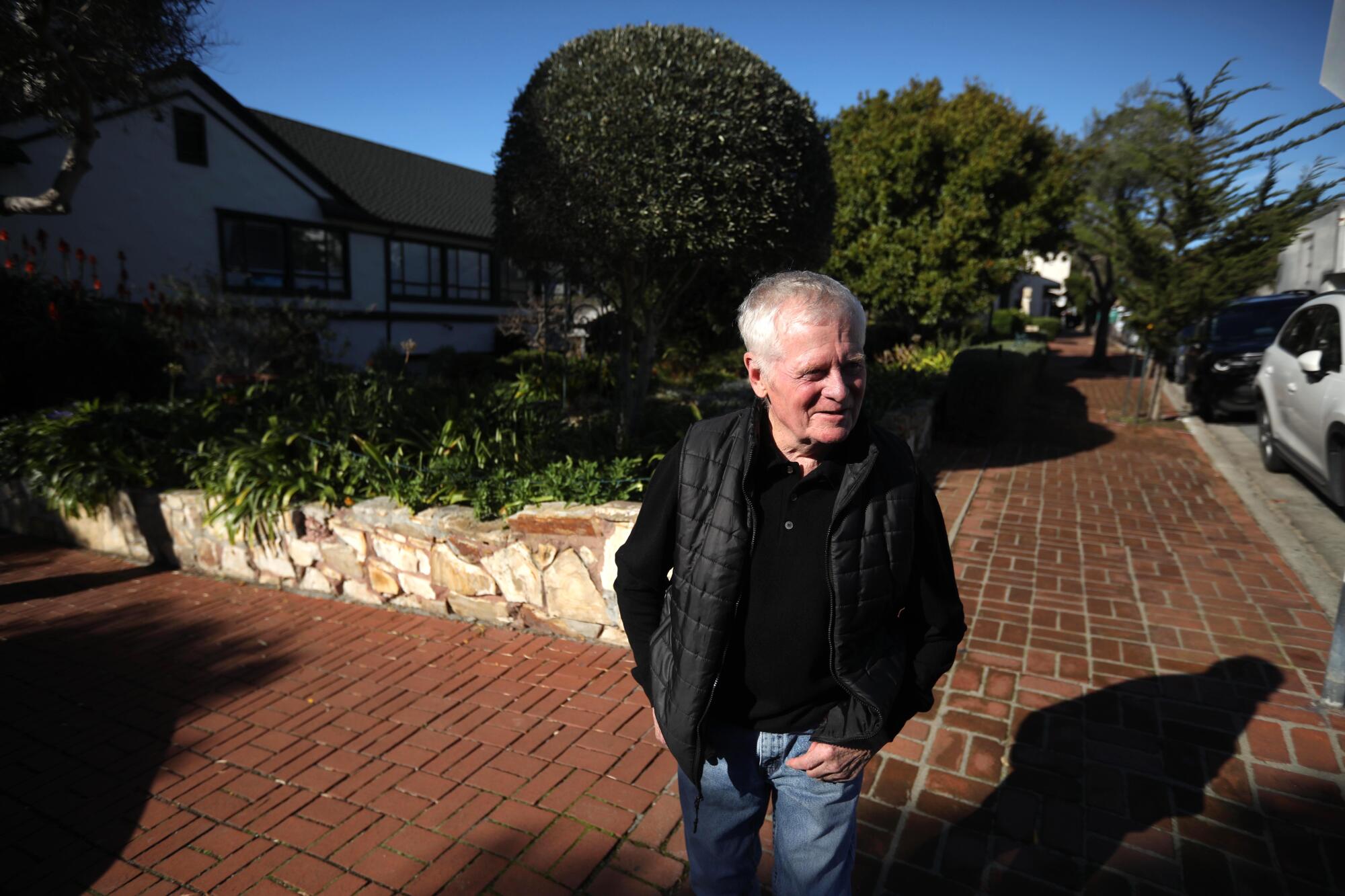
“Did you move here because you like the character, or did you move here because you want to change the community? We’re unique, and we pride ourselves on that,” Potter said while sipping wine at the Cypress Inn, built in 1929 and once owned by actress Doris Day.
There are inconveniences, Potter acknowledged. For two years, he and his wife did not have TV because she got so frustrated trying to set up cable. They played dominoes and read at night, which wasn’t so bad.
Twice, a neighbor’s caviar was wrongly delivered to their house. And they received COVID-19 test kits meant for another neighbor.
He dismissed people’s fears that they won’t be found by an ambulance — “That’s bull!” he said — because emergency response times are fast in the one-square-mile town.
Carmel-by-the-Sea Police Chief Paul Tomasi said in an email that average response times are two minutes for police and three minutes for firetrucks and ambulances.
The city, he said, has its own dispatch center, with workers trained to decipher people’s descriptions of where they live.
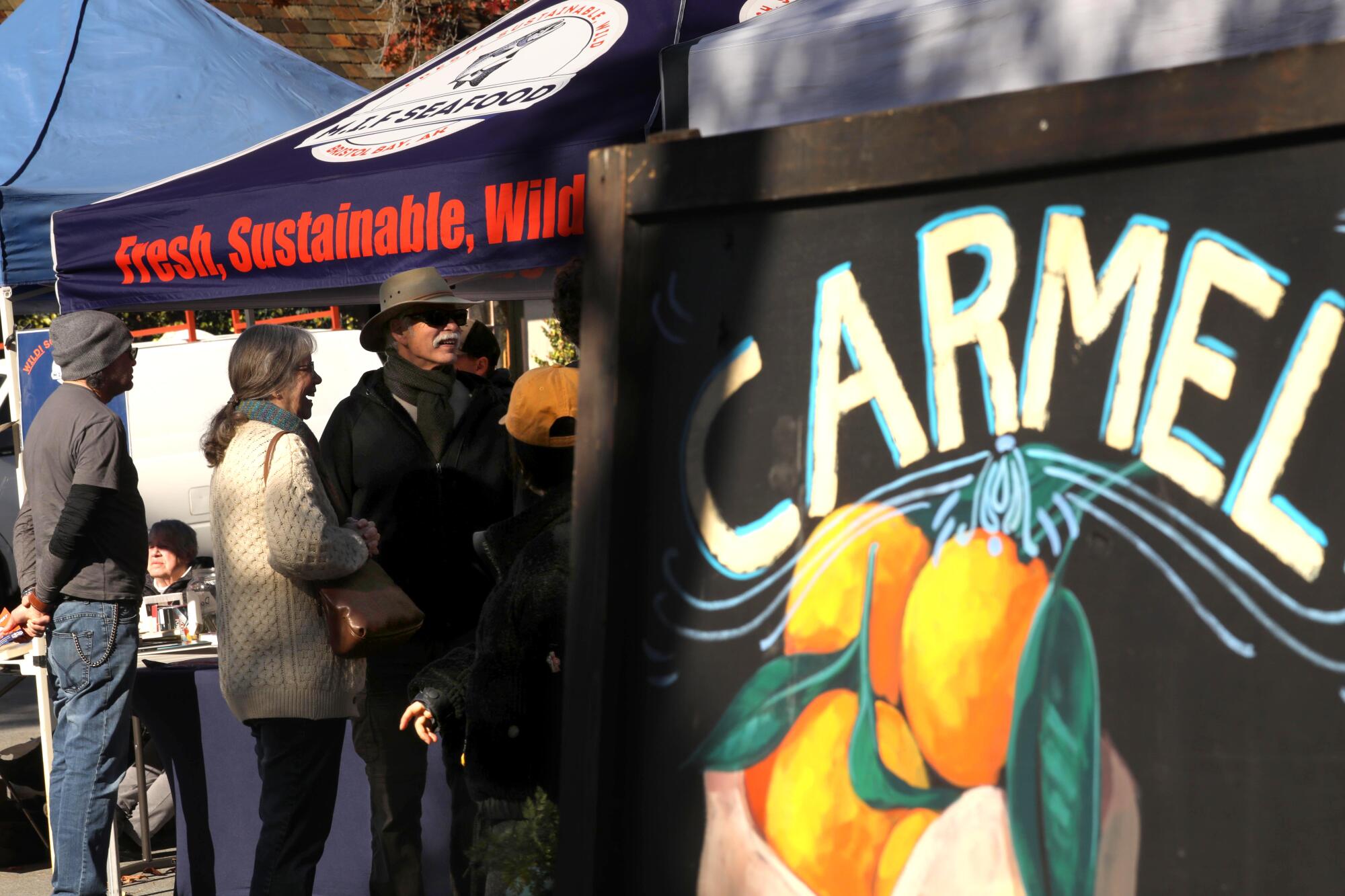
Sometimes, visitors or renters struggle to say where they are. But it is “rarely an issue,” he said, because 911 calls show the latitude and longitude of the caller, and dispatchers use Rapid Deploy, which pings cellphone locations.
The Monterey Fire Department, which operates the fire station in Carmel-by-the-Sea, did not respond to requests for comment.
The California Fire Code requires buildings to have and display addresses. But Carmel-by-the-Sea has never enforced the provision, then-Fire Chief Gaudenz Panholzer said a statement to the City Council this fall.
In 1906, a magnitude 7.8 earthquake and subsequent fires destroyed most of San Francisco. Scores of artists, writers and poets fled the wreckage and settled in Carmel-by-the-Sea.
Instead of numbers, they gave their houses names.
Today, whimsical monikers are displayed on quaint signs. One house is called Thisisit. The one next door is Thisisnt.
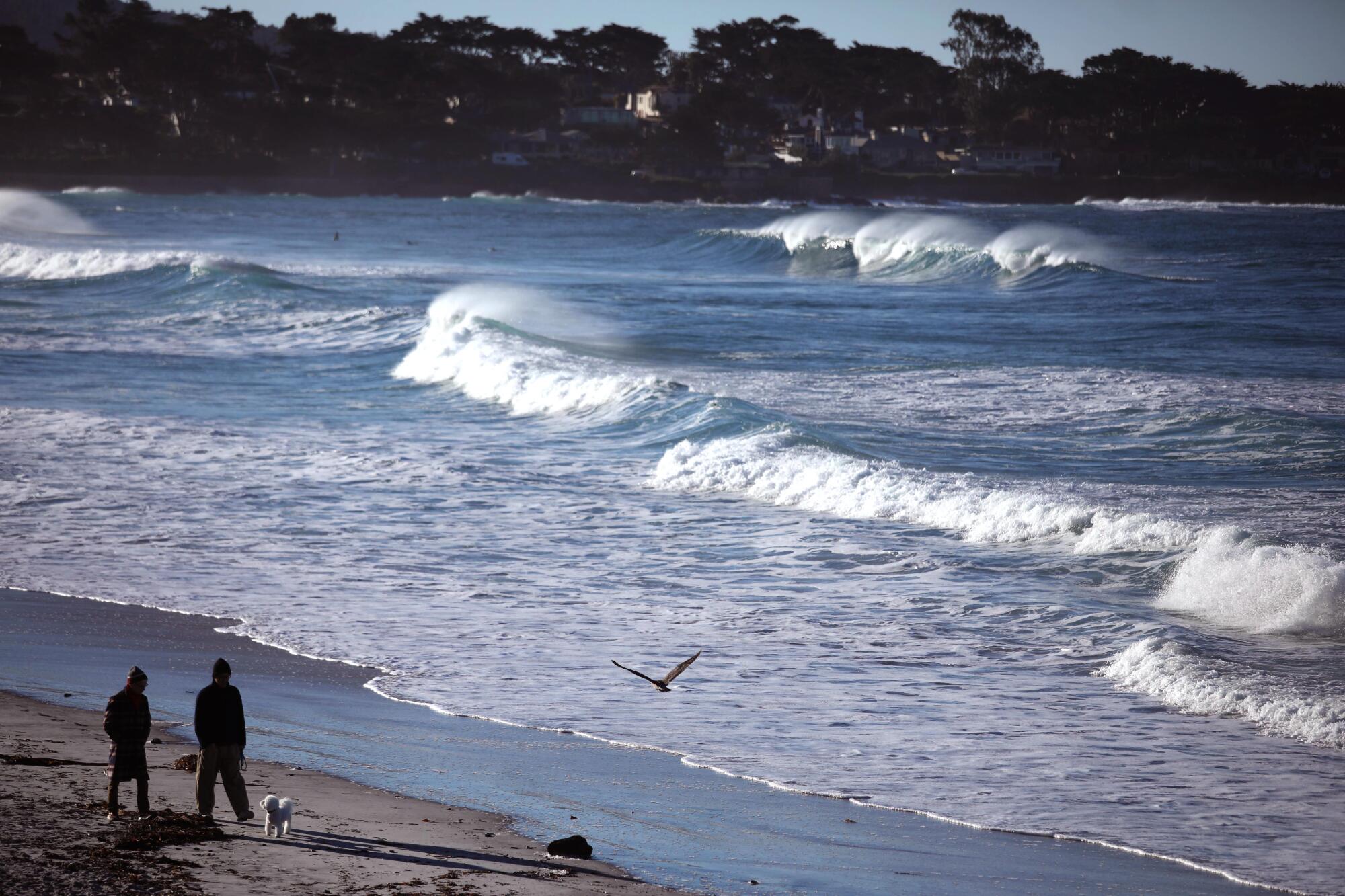
Carmel-by-the-Sea — where actor Clint Eastwood was mayor in the 1980s — is now filled with pricey vacation homes that sit empty much of the year. An 1,892-square-foot cottage on Casanova Street, three doors northeast of 7th Avenue, is listed on Zillow for $3.588 million.
The town of 3,200 is about 87% white, with a median age of 65, according to the U.S. Census. More than half are believed to live here part time, Councilwoman Ferlito said.
A few years ago, Ferlito ordered Christmas pears from Harry & David that were shipped to family and friends across the country. All arrived, except the ones for her husband.
The delivery driver could not find their home.
She found the pears outside an empty house that was probably a vacation home. They had been sitting on the porch for two weeks — rotting.
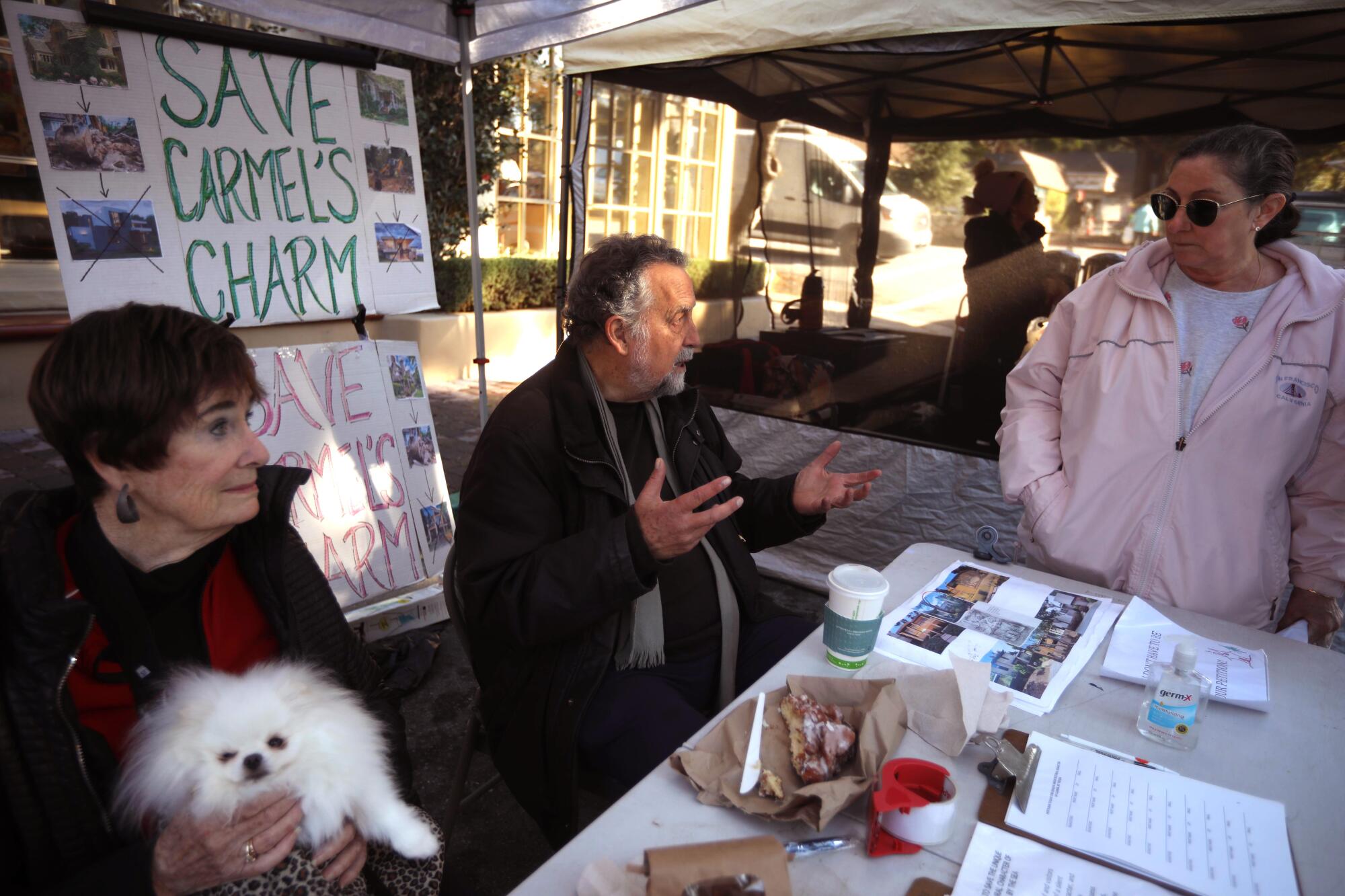
At the local farmers market this month, Hall and her Carmel Preservation Assn. co-chair, Neal Kruse, manned a booth with signs reading: SAVE CARMEL’S CHARM.
They gathered signatures for a petition against boxy modern architecture that does “not fit into the Old World charm of our village in the forest.”
A visitor from nearby Pacific Grove chuckled when he saw it.
“The only thing more NIMBY than Pacific Grove is Carmel,” he said. “Progress is good sometimes.”
Hall, a retired medical research psychologist, said her hometown — a draw for tourists from around the world — is at risk of becoming “Anywhere, U.S.A.”
Too many historic cottages, she said, have been “mowed down” and replaced by sleek modern homes. Addresses, she said, are “just part of the whole scene of, ‘Let’s get modern. Let’s have progress. Let’s make life easier.’ ”
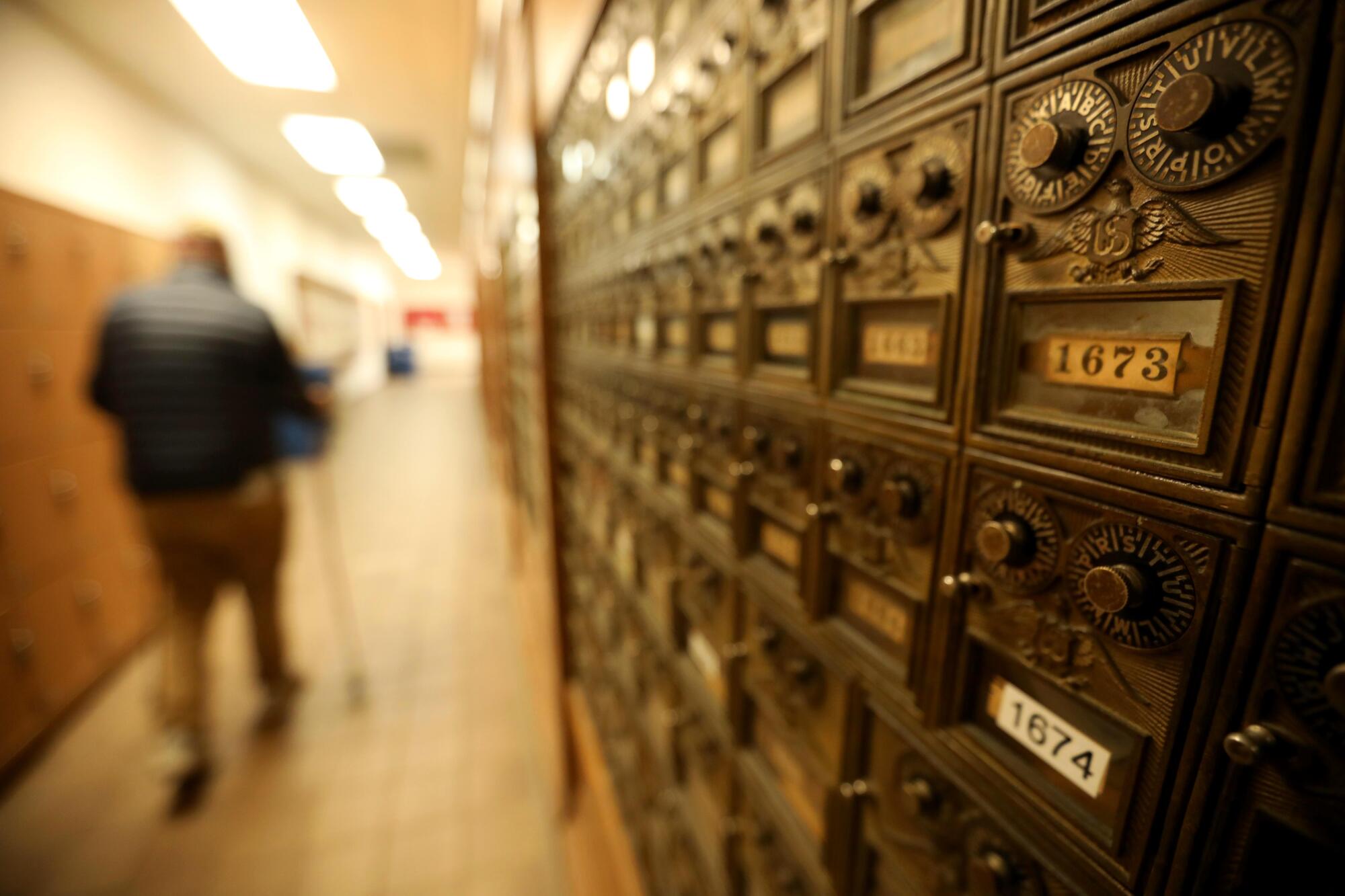
Hall, who carried her 4-pound Pomeranian, Bubbles, in a leopard-print sling, lives in a house called Jollyhase. She shops for her dog at Chewy.com, using directional descriptors, and has never missed a package.
Kruse, an architectural designer, said tourists stop by their booth all the time, decrying bland modernity in their own once-charming towns.
“They speak with sorrow that their village is gone,” Kruse said. “That’s the level that this war is being fought: It’s keeping the soul and the spirit of Carmel.”
As Kruse spoke, Lisa Ferchau, an old friend, shouted, “I haven’t seen you since God was a baby!” and hustled over.
Ferchau, 68, and her husband split their time between Houston and their home here, called Penny Lane. They come to Carmel-by-the-Sea precisely because they don’t want to be found.
“Do I care if the UPS man can’t find my house? Not really,” Ferchau said. “I just don’t want anybody to know I’m here. ... We don’t have a phone. We don’t have an address. TV is sporadic. Internet’s horrible.”
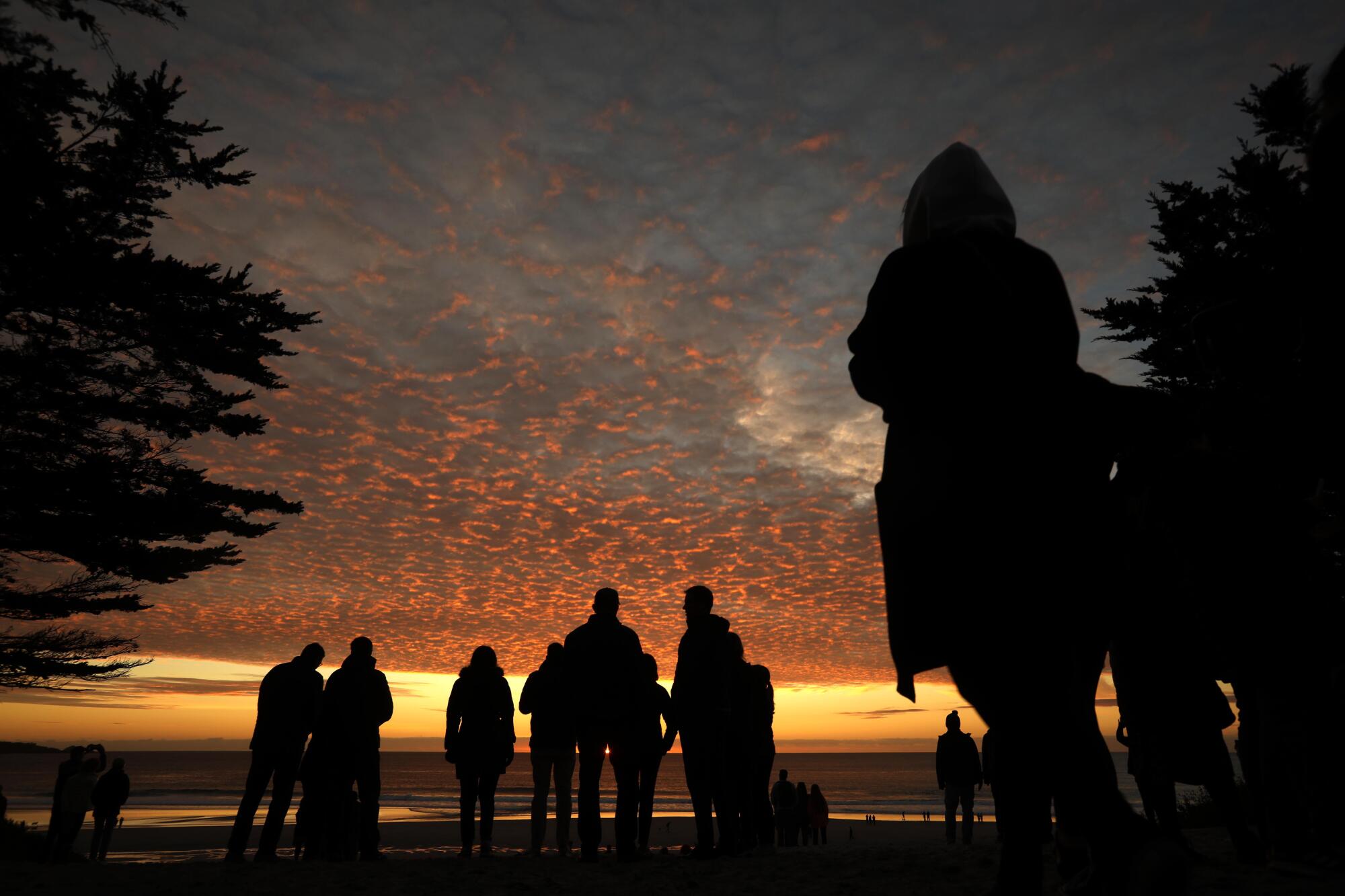
The next morning, Hans Lehmann, 91, strapped on a wool cap and Brooks sneakers, grabbed his hiking sticks and headed for the post office.
Lehmann — whose family settled in Carmel after fleeing the Nazis in his native Germany — lives in a century-old redwood house on a hilly street. He does the steep 15-minute walk every day.
He wouldn’t mind getting an address: “I do a lot of Amazon. It is so convenient.”
He loves the friendly banter at the post office. But there’s not as much of that these days, with people looking at their cellphones.
At the post office, Lehmann unlocked Box 1673 and thumbed through his mail.
“No good. No good. Spam. Spam. Spam.” He tucked a newsletter from the Carmel Residents Assn. into the back pocket of his corduroys.
In the lobby, Lehmann’s face lighted up when he saw a line at the counter, neighbors and new faces alike.
He didn’t have much time to linger, so he headed back up the hill, stopping to admire a wooden sign with a rainbow and a bluebird. Affixed to a fence post, it displayed the house’s name: Somewhere. He had been wanting to meet the owners, who spotted him from the window and came out to say hello.
When Carol Daks, 86, stepped outside, Lehmann introduced himself: “I’m Hans. As in Christian Andersen.”
Daks said she prefers Somewhere in Carmel, which feels more private than an address.
When her husband, Calvin, 89, joined them, he asked with a laugh: “Did she say she preferred not having them? I hate it! You can’t get things delivered here.”
“We meet a lot of our neighbors, though,” Carol said. “They stop and talk. They say, ‘Where is the corner? Is this southwest?’ ”
After chatting with the Dakses, Lehmann resumed his walk. He had a few more blocks to go before reaching the fifth house northeast of 1st Avenue — the one with the brown siding and the green and red trim.
More to Read
Sign up for Essential California
The most important California stories and recommendations in your inbox every morning.
You may occasionally receive promotional content from the Los Angeles Times.















